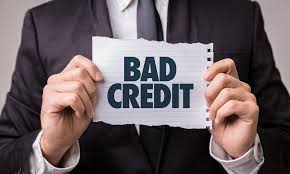 With a small business, getting a good handle on the financial side of things is particularly important. In the early years, maybe you made a hash of things? It’s never too late to take steps to get on the right side now.
With a small business, getting a good handle on the financial side of things is particularly important. In the early years, maybe you made a hash of things? It’s never too late to take steps to get on the right side now.
In this situation, it’s likely that your business now has bad credit. However, by working on it to make improvements to how it operates and taking out loans strategically, it’s possible to avoid it holding the company back.
What Went Wrong Previously?
There’s a difference between borrowing sensibly and doing it recklessly. Certainly, not over-borrowing is important, but it’s also necessary to get your house in order first.
Assess what caused you and your business to run aground when taking out funding previously. When missing repayments, why was this? How did the gap appear between where you thought it was affordable and the reality later? Was this avoidable, or did you forget certain business expenses that rendered your calculations moot?
Figuring out what happened before the event that caused the bad credit is a great way to know how to avoid making the same mistake a second time.
Understanding the Financial Statements
It is worthwhile to look at the company’s current revenue and expenses to see what the future outlook is likely to be. Bear in mind that the Profit and Loss Statement is going to be different from the Cash Flow Statement.
The company needs to be fundamentally profitable to experience an improving Balance Sheet, but it’s also sensible to be mindful of the differences between the P&L and business cash flow. For instance, goodwill or depreciation may change how the profitability looks on paper, but these non-cash events can make it appear like the business has a different level of profitability than is realistic. In pure cash terms, the Cash Flow Statement is likely to be a truer indicator.
Get the Business Ready to Move Forward
Consider whether there’s presently a sizable gap between the business revenue and current expenses.
There will need to be one if you apply for new business financing. Indeed, lenders may ask to see these numbers to assess that for themselves. They may address other common questions relating to how they decide which loans to approve, even with previous bad debt – these are worth looking over for greater clarity.
To address this, it’s best to look at trimming back the current expenditures to ensure the lending is more affordable and reasonable. Also, it doesn’t hurt to have a plan for expanding the business from its current level, as this delivers more air in the sails too.
What Comes Next?
It’s always best to have a plan in mind when borrowing for business purposes. This makes it less likely that money will be spent frivolously on non-essential business expenditures that are later regretted when the debt is still being repaid. As such, match dollar-for-dollar the sum to be borrowed to confirm where exactly it will be spent.
Then look at what the ROI will be from those capital investments to ensure that you’re being smart in your financing arrangements. After all, Penny Savers should never forget to get value for money in all their money dealings.




No Comments